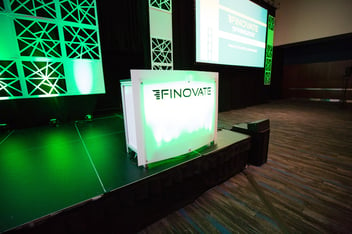Communication and Loyalty Programs: Three Steps to Increase Engagement
Assuming you're over the age of 15, and we're fairly certain most of our readers are, you probably remember the painstaking way kids with crushes used to communicate with each other in grade school. Back then, the most effective methods of ascertaining a potential mate's interest was usually one of three methods:
- Ask a friend to ask one of your crush's friends if there's any interest, or at least if the crush think's you're cute
- A note with an offer of a date or enhanced relationship status with the requisite boxes for "YES" and "NO"
- The rare, but brave, face-to-face proposition
It took a lot of guts to engage in any of the three, and all came with their own risks and dangers. Often times, though, they connected, and the positive feedback would make you feel like the biggest of bigshots in middle school.
All it took was that first step - acknowledging an affinity for someone, and going out on a limb to see if it would be returned. Sound familiar, brands?
We know from industry research that the average person holds about 10 loyalty program memberships. Yet they're active in maybe half of them. The reasons for that could be the program lacks any relevant value, the member signed up just to gain access to a one-time spiff, or, most likely, the program just isn't communicating with them.
How many of those loyalty programs do you actually hear from? Even better, among the ones who do send you information, how many of them actually communicate anything of value?
It can't be emphasized enough: it's time to start communicating with members. 90% of loyalty program members are open to receiving communications from their programs, and there is clear evidence that frequent communication can drive action.
Here are the three important elements of a loyalty program communications effort. Stick with these three principles in mind, and you can see exponential returns in engagement and satisfaction:
1. Pick the right channels. Email works for most, but many customers prefer to receive texts. Some like traditional printed/mailed pieces. The best bet? Give them options on how they want to be communicated with.
2. Be relevant. This is the most important element, and the most difficult to grasp. Remember the 90% stat we cited? Well, only 46% report that the communications they do receive are relevant. Relevance is difficult to define or pin down, and it changes with the audience.
The key is knowing your brand - what is it that you offer that interests people and keeps them coming back? For some people it's your discounts, for others it's about corporate social responsibility causes. The reward of promoting these matching values? Of those 46% who felt the communications were relevant, 93% also report "very high satisfaction" with those programs.
3. Be open to the response. If relevance is the most important element, this may be the most challenging. The nature of the program shouldn't just be measured and shaped based on open rates and clicks, or even redemptions. Every communication sent out should have an option for the recipient to respond. That means emails can't be sent from a "NO-REPLY" address, someone needs to monitor text responses, and measure should be taken to monitor online and social mentions of the brand. Odds are, the personal responses will be more revealing the most data.
A relevant, helpful loyalty program with a relevant, helpful communications effort behind it can have as much of an impact on engagement and loyalty as any other tactic a brand can partake in because it's more about building relationships than marketing.
Isn't that what a loyalty program is supposed to be about?
□ YES □ NO
(please check one)
Topics: Customer Engagement, Discount Programs, Access Development, customer loyalty
Written by: Brandon Carter





.jpeg)







Share your Comment.